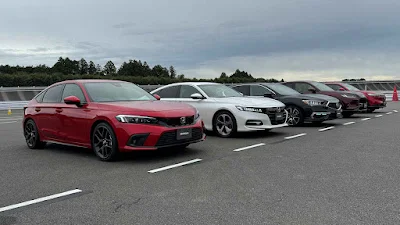Honda has two big global goals by 2050: the first is to achieve carbon neutrality, while the second is to have zero traffic collision fatalities involving not just their cars, but their motorcycles as well. Before that though, they’ve set a 50 percent reduction in traffic collision fatalities by 2030 compared to current numbers. 2030 may seem like a long time into the future, but it’s just seven years from now. So, how is Honda going to do it?
First up here are some grim numbers. As a result of Honda’s investigations, they’ve discovered that 74 percent of traffic collision fatalities involve motorcycles. Only 12 percent involve passenger cars, while pedestrians account for 8 percent.
Out of all motorcycle rider fatalities, 37 percent are due to a collision with a passenger car, 36 percent figure in single-vehicle accidents, 17 percent against a truck or bus, and just 9 percent against other motorcycles.
Based on these numbers, if Honda wants to drastically cut the number of traffic fatalities, they have to focus on reducing or eliminating collisions between motorcycles and cars.
For their four-wheeled vehicles, the solution is simple enough: equip Honda Sensing—the brand’s Advanced Driver Assist System or ADAS—as standard across the entire ASEAN line-up before 2030. Currently, the City sub-compact sedan upwards has it. In future model updates, it’ll be made available even on entry-level models like the Brio as well. The Honda Sensing system itself will be updated with motorcycle detection. Standard on the all-new CR-V, it’ll become commonplace on every single Honda model before 2030.
By equipping Honda Sensing with motorcycle detection to all its models by 2030, it’ll be able to drop accidents involving automobiles by 62 percent. However, to fully realize their target, they’ll be adding technologies to its two-wheeled vehicles as well.
Currently, Honda motorcycles have two key technologies: ESS or Emergency Stop Signal which flashes the brake lamps during hard braking to increase visibility; and CBS or Combined Braking System which links the front and rear brakes using a proportional control valve to determine the appropriate braking amount each wheel needs.
The use of these technologies together with continuous driver and rider education will hopefully help Honda achieve their 2030 safety targets enroute to zero traffic fatalities by 2050.


This sounds like a greenlight for both Honda automobiles and motorcycles.
ReplyDeleteSo when will they recall Civics here? Several owners have been complaining of the "sticky steering" issue...
ReplyDelete